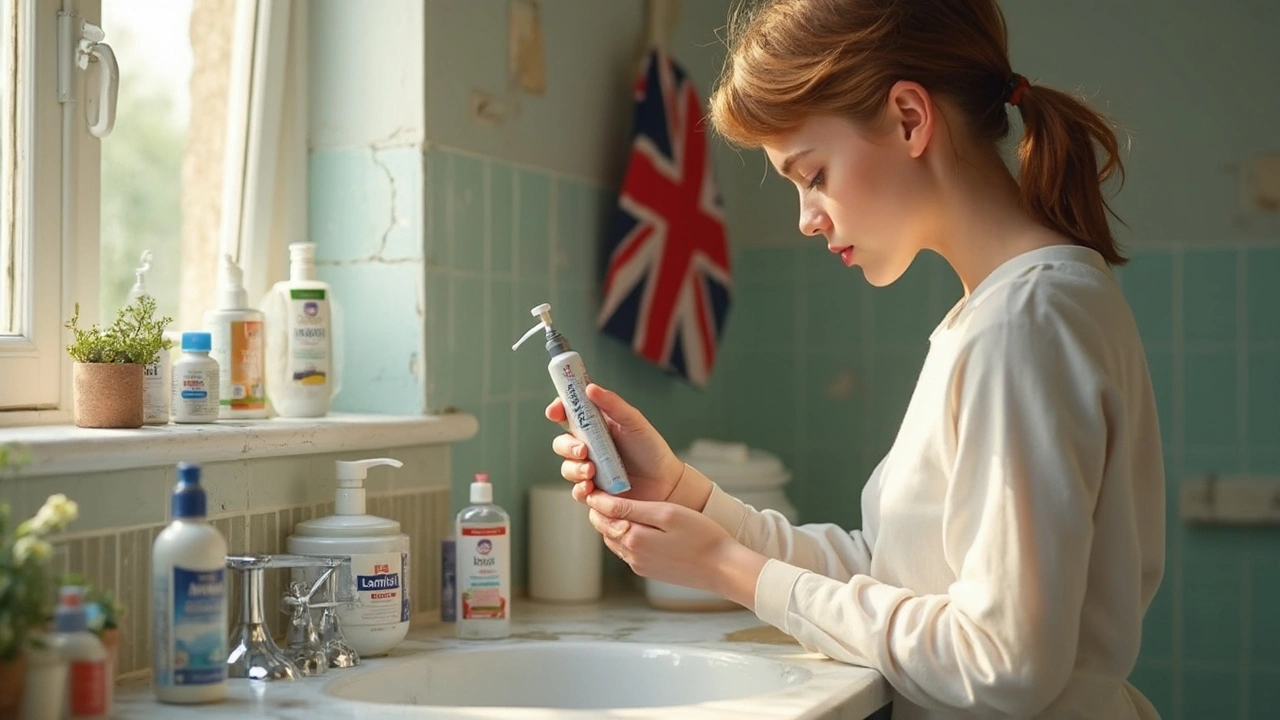Terbinafine — what it treats and how to use it
Got a stubborn athlete's foot, ringworm, or nail fungus? Terbinafine is a common antifungal that treats skin and nail infections caused by dermatophytes. It comes as a topical cream, gel, spray, and as an oral tablet (brand name Lamisil and generics). Topical forms work well for most skin infections. Oral tablets are usually used for fingernail and toenail fungus or severe/widespread infections.
How terbinafine works and usual dosing
Terbinafine is an allylamine antifungal. It blocks squalene epoxidase, stopping the fungus from building its cell membrane. For adults, the common oral dose is 250 mg once daily. Nail infections typically need longer courses: fingernail infections often 6 weeks, toenail infections about 12 weeks. Topical terbinafine is usually applied once or twice daily for 1–4 weeks depending on the condition. Your doctor will pick the right form and length based on the infection site and its severity.
Side effects, cautions, and interactions
Most people tolerate topical terbinafine well; skin irritation or redness can occur. Oral terbinafine can cause stomach upset, headache, and changes in taste or smell — some people notice a reduced taste that can last weeks. More serious but rare problems include liver injury and severe skin reactions. If you get jaundice, dark urine, persistent nausea, or a widespread rash, stop the drug and contact a doctor immediately.
Terbinafine can affect liver tests, so doctors often check baseline liver enzymes before long courses and repeat tests if you have liver disease or risk factors (heavy alcohol use, certain medications). It also interacts with some drugs because it can inhibit CYP2D6; that can change levels of medications like certain beta-blockers or antidepressants. Tell your provider about all prescription drugs, supplements, and herbal products you take.
Pregnancy and breastfeeding: topical use is generally safer; oral terbinafine is usually avoided unless a clinician thinks the benefits outweigh risks. Always ask your doctor if you're pregnant, planning pregnancy, or breastfeeding.
Practical tips that actually help: trim and file infected nails to let medication reach the fungus better; keep feet dry and rotate shoes to reduce reinfection; use separate towels and wash linen regularly; finish the full treatment even if symptoms improve. For nails, expect visible improvement to be slow — it can take months for a healthy nail to grow out after the fungus is gone.
Want to know if terbinafine is right for you? See a clinician for a proper diagnosis (they may take a nail clipping or skin scraping). Prescription guidance prevents wasted time and reduces the chance of side effects. If you have questions about dosing, liver safety, or interactions, bring a list of your meds to your visit.
Terbinafine is an effective, widely used option for fungal infections when used properly. With the right form, course length, and safety checks, it often clears infections that over-the-counter options can't fix.
Lamisil Uses, Side Effects, and Success for Treating Fungal Infections

Uncover how Lamisil works, what makes it a favorite for fighting stubborn fungal infections, and what real people wish they knew before using it. This article explores the ins and outs of Lamisil for athlete’s foot, nail fungus, and more—backed by facts, anecdotes, and plenty of practical tips. Learn when Lamisil might be your best bet, when to watch out, and how to get the most from this well-known antifungal. Whether you’re considering a prescription or over-the-counter version, this guide gives you everything you need to know—without any medical jargon.
- June 13 2025
- Tony Newman
- 20 Comments
